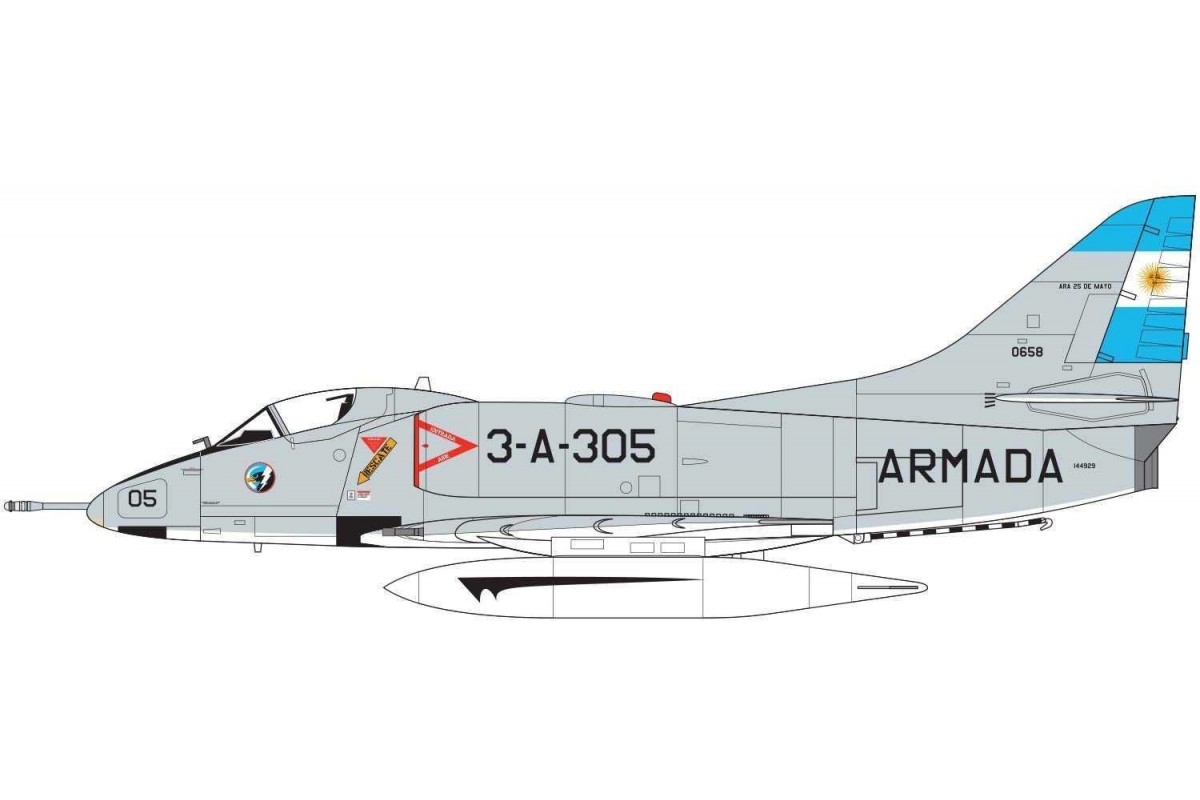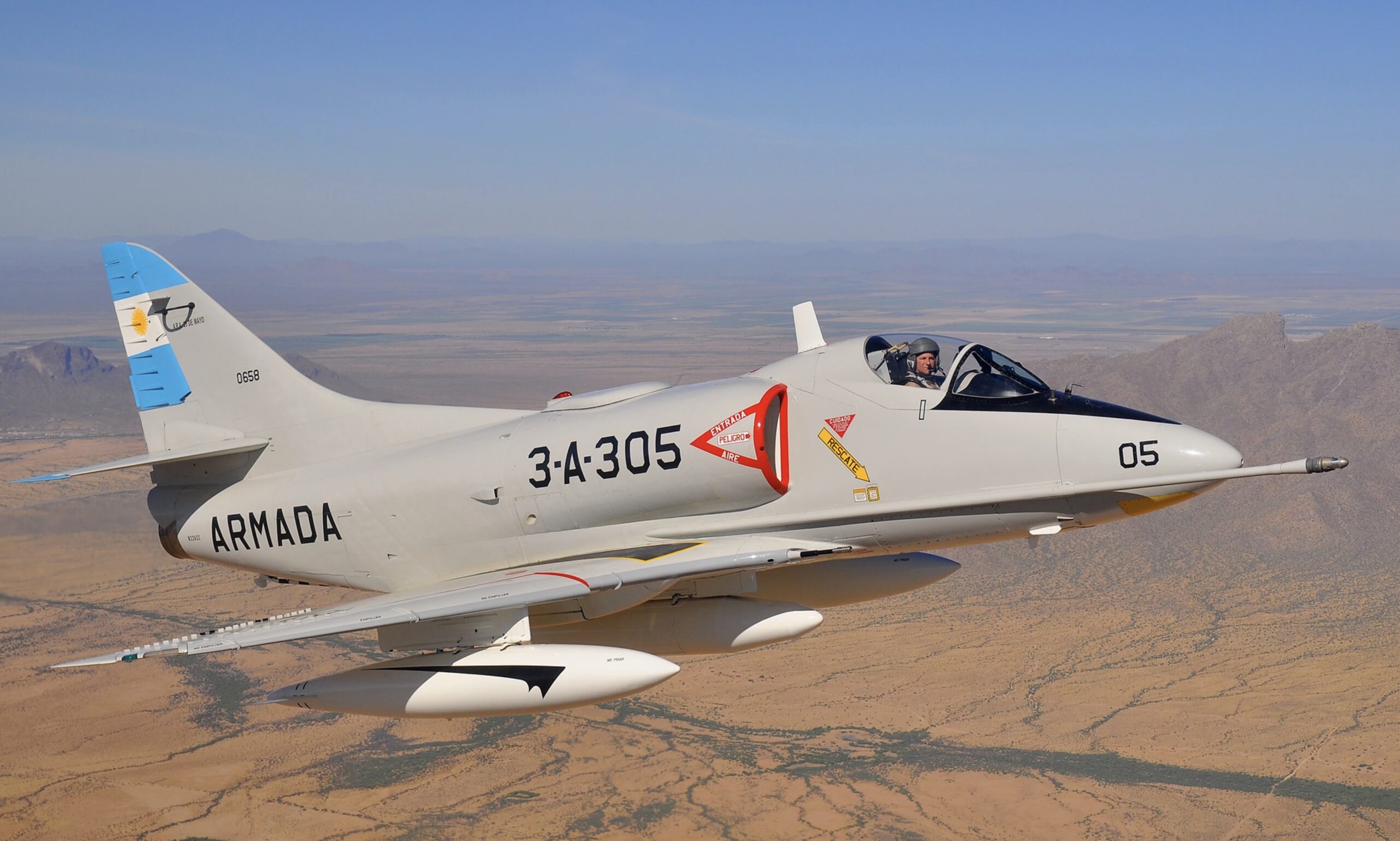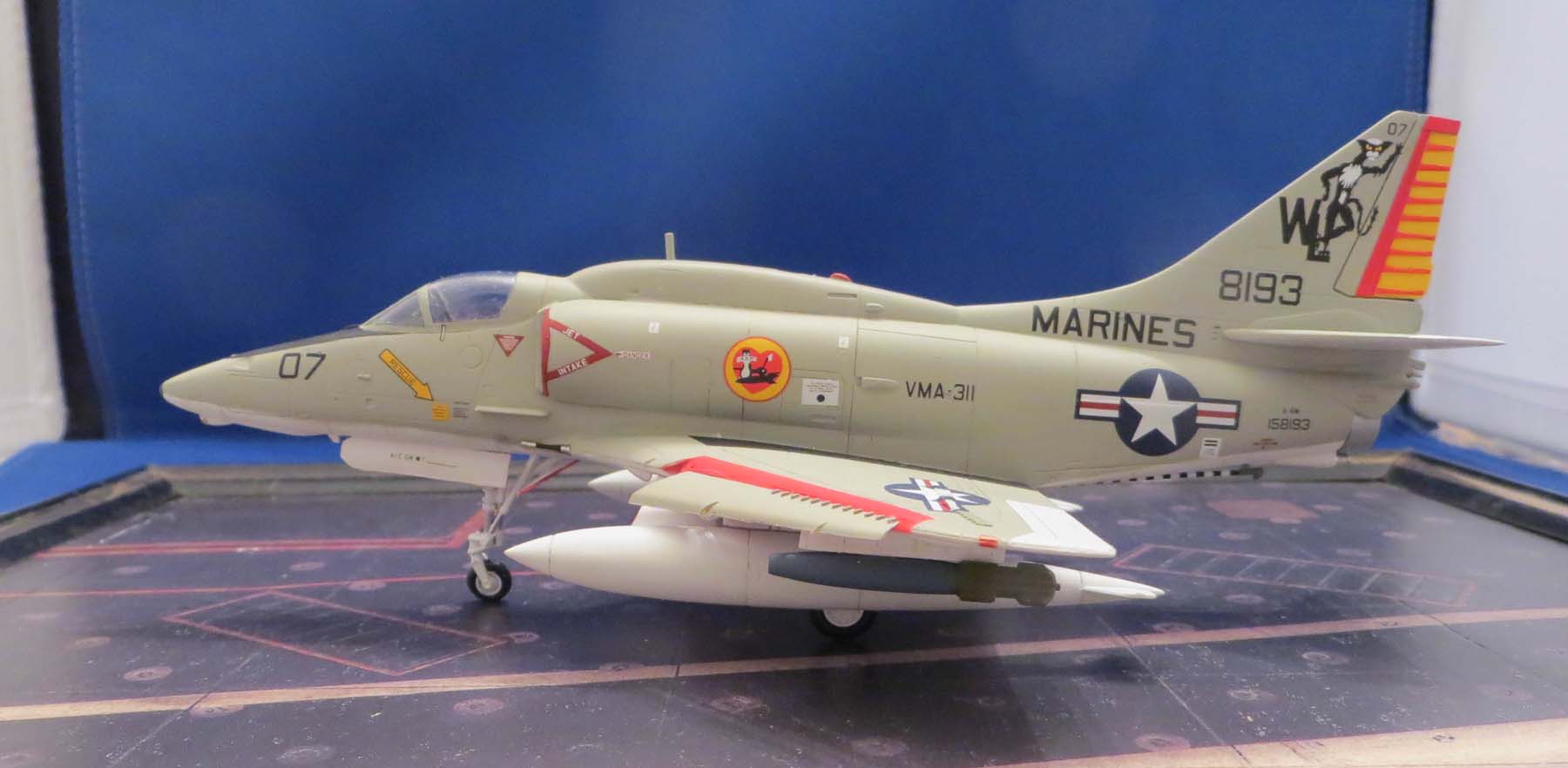A4 Fighter Jet - This is the Museum's A-4 Skyhawk flying back in 1966 when it flew VA-164 from USS Oriskany (CV-34).
New Model: After years of planning, the A-4E received a fresh coat of paint ahead of our 2001 Airshow and it was worth the wait! A huge investment of time and materials from Hawley's Paint gave the Skyhawk this beautiful makeover.
A4 Fighter Jet

Although it looks like a fighter, the A-4 is a subsonic light attack aircraft. The Navy used them extensively in Vietnam. The Museum model has the right rules, but it doesn't work.
Douglas A 4 M/n/ar/af 1 Skyhawk: Aircraft In Detail: Pied, Robert, Deboeck, Nicolas: 9782931083048: Books
The Douglas A-4 was designed by the famous Ed Heinemann. He created a simple, light and amazingly smooth airplane that pilots loved. The Skyhawk has been called "Scooter", "Bantam Bomber" and "Heinemann's Hot-Rod".
This is the 1985 A-4E Skyhawk Museum at Andrews Air Force Base. Note the hump on the back, which was missing from the original 1966 image. This was a later addition, added to many A-4s during development cycles to build additional avionics.
The Douglas A-4 Skyhawk is a single-seat attack aircraft developed for the United States Navy and United States Marine Corps in the early 1950s. The swept-wing, single-turbojet Skyhawk was designed and manufactured by the Douglas Aircraft Company , and later by McDonnell Douglas. It was originally designated A4D under the pre-1962 US Navy nomenclature system.
The Skyhawk is a relatively light aircraft with a maximum weight of 24,500 pounds (11,100 kg) and a maximum speed of over 670 miles per hour (1,080 km/h). Five hard locations support a variety of missiles, bombs and other weapons. It was capable of carrying a bomb load equivalent to that of a World War II-era Boeing B-17 bomber, and was capable of delivering nuclear weapons using a low-altitude bombardment and delivery "loft". The A-4 was originally powered by a Wright J65 turbojet engine; from the A-4E onwards, the Pratt & Whitney J52 was used.
Douglas A4 Skyhawk History
The Skyhawks played an important role in the Vietnam War, the Yom Kippur War and the Falklands War. 60 years after its first flight, some of the approximately 3,000 produced are still in service with several air forces around the world, including the Brazilian Navy's aircraft carrier, São Paulo.
Applicability: This is done on one under-fuselage rigid point rated at 3,500 lb (1,588 kg), and on four rigid points, the inner ones are rated at 2,250 lb (1,021 kg) and two outer ones. each 1,000 lb (454 kg); a wide range of weapons that can be carried, including nuclear bombs, the Mk 84 2,000 lb (907 kg) bomb, the Mk 83 1,000 lb (454 kg) that does not fall or fail, the Mk 82 500 lb (227 kg) unguided bomb, the Mk 81 250 lb (113 kg) long-delay bombs, LAU-3/A launcher with 19 2.75 in (69.85 mm) rockets, LAU-10/A launcher. equipped with four 5-inch (127 mm) rockets.
Communications and navigation equipment including Bendix flight control, Marconi AN/AVQ-24 head-up display, Texas Instruments AN/AJB-3 bombardment system, ANIASN-41 navigation computer, AN/APN153(V) radar navigation and electronic measures . .

* To protect your privacy, we will send you an email to confirm your registration. Click the link in the email and follow the instructions. US Navy A-4E Skyhawk of VA-164, from USS Oriskany, en route to attack targets in North Vietnam, 21 November 1967.
California Mansion Has A 4 Skyhawk Fighter Jet Parked Above The Patio
The Douglas A-4 Skyhawk is a single-seat attack-capable fighter aircraft designed for the United States Navy and United States Marine Corps in the early 1950s. The single-engine, delta-wing turbojet Skyhawk was designed and produced by the Douglas Aircraft Company, and later by McDonnell Douglas. It was originally designated A4D under US Navy nomenclature. before 1962.
The Skyhawk is a relatively light aircraft, weighing over 24,500 pounds (11,100 kg) and has a top speed of 670 kilometers per hour (1,080 km/h). Five hard locations support a variety of missiles, bombs and other weapons. It can carry a bomb load equivalent to that of a World War II-era Boeing B-17 and can deliver nuclear weapons using a low bombardment and "loft" mode. The A-4 was originally powered by a Wright J65 turbojet engine; from the A-4E onwards the Pratt & Whitney J52 engine was used.
The Skyhawks played an important role in the Vietnam War, the Yom Kippur War and the Falklands War. In 2022, nearly seventy years after the first flight in 1954, approximately 2,960 had been produced (up to February 1979)
The Skyhawk was designed by Ed Heinemann of Douglas Aircraft at the request of the US Navy. for a jet-powered attack aircraft to replace the aging Douglas AD Skyraider (later renamed the A-1 Skyraider).
Fujimi 25022 1/72 A 4m Skyhawk Kit Build Review
Heinemann chose to create a design that reduced its size, weight and complexity. The result was an aircraft that weighed only half the weight of the Navy.
It had integral wings that did not need to be folded for storage. The first 500 production models are priced at $860,000 each, well below the Navy's $1 million mark.
The diminutive Skyhawk soon earned the nicknames "Scooter", "Kiddiecar", "Bantam Bomber", "Tinker Toy Bomber" and, due to its speed and performance, "Heinemann's Hot-Rod".

This aircraft is a late WWII design with a low delta wing, tricycle undercarriage and a single turbojet engine behind the fuselage with twin vents on the sides of the fuselage. The tail is cruciform and the vertical stabilizer is mounted above the fuselage. Armament consisted of two Colt Mk 12 20 mm (.79 caliber) guns, one in each gun section, with 100 rounds per gun (the A-4M Skyhawk II and A-4M-based models have 200 rounds per cannon), as well as a wide variety of bombs, missiles and rockets that are carried in a confined space under the fuselage line and hardpoints under each wing (initially one per wing, later two).
Navy A 4 Skyhawk Hi Res Stock Photography And Images
The short-span delta wing required no wingtip complexity, saving about 200 pounds (91 kg). Its backs were made of a single machine that spanned both sides of the wings.
The front slats were designed to be lowered at the right speed by gravity and air pressure, saving weight and space by omitting motors and switches. Similarly, the main undercarriage did not fit into the main wing, which was designed so that the wheel was only retracted into the wing and the undercarriage was placed under the wing. So the wing structure was lighter with the same overall strength. The system was built from a single panel reinforced with external ribs.
A4D Skyhawk with rear fuselage removed and engine slid into place, Marine Corps Air Station Iwakuni, Japan, 1959
The turbojet engine was accessible for service or replacement by removing the rear fuselage and sliding the engine. This avoided the need for hinged and latched entry doors, which reduced weight and complexity. This is in contrast to what is often done in aircraft design, where an increase in weight in one area leads to a corresponding increase in weight in other areas, creating a need for greater strength, weight, bigger wings and a bigger empnage area and so on in a vicious circle.
Let Everyone Know You've Made It By Buying Your Own Douglas A 4c Skyhawk Fighter Jet
The A-4 pioneered the "buddy" air-to-air refueling concept. This allows the airline to offer more of the same type, reducing the need for dedicated tanker aircraft - a particular advantage for small or long-range air weapons. This allows for significant improvement in performance and reliability against the loss or failure of the tanker aircraft, although this method reduces active combat power in the ship.
The A-4 supply selected would include a "buddy store", a large external fuel tank with a hose loop at the rear and a wide fuel supply bucket. The plane was picked up without weapons and launched first. Attack aircraft were armed at high speeds and fueled as much as possible to a maximum take-off weight that was much less than a full tank.
Once airborne, they unloaded their fuel tanks from the tank using a fixed A-4 refueling machine on the starboard side of the aircraft's nose. It could organize both full parks and fat parks. The A-4 was rarely used for refueling in US service. after the KA-3 Skywarrior was found in larger vehicles.

The A-4 was also designed to be able to make an emergency landing, due to hydraulic failure, two drop tanks are almost always carried by these aircraft. Such a landing resulted in minor damage to the nose of the aircraft which could be repaired in less than an hour.
Meet The A 4 Skyhawk: The Cheap Attack Jet That Fought Everywhere
The last production A-4, the A-4M of Marine Squadron VMA-331 had the flags of all nations that used the A-4 painted on the sides of the fuselage.
The Skyhawk proved to be the standard aircraft carrier of the United States Navy in the postwar period. Because of its small size, it can be
Sig p365 tulster holster, sig p365 iwb holster, sig holsters p365, sig p365 sas holster, sig p365 xl holster, sig p365 hybrid holster, appendix holster sig p365, safariland holster sig p365, sig p365 belt holster, sig p365 holster, sig p365 purse holster, sig sauer p365 holster
0 Comments